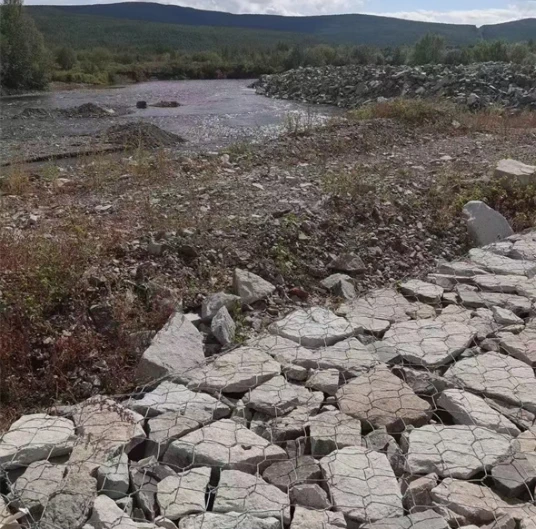Dek . 31, 2024 14:13 Back to list
Manufacturers of Stepped Gabion Walls for Durable and Sustainable Landscaping Solutions
Stepped Gabion Walls An Innovative Solution for Erosion Control
Throughout the centuries, the battle against soil erosion has been a persistent challenge faced by civilizations worldwide. As urban areas expand and agricultural activities intensify, the need for effective erosion control solutions becomes increasingly urgent. One such solution gaining popularity in recent years is the stepped gabion wall. This innovative structure not only provides support and prevents soil loss but also enhances the natural landscape. In this article, we will explore the concept of stepped gabion walls, their benefits, and the factories that specialize in their production.
Understanding Gabion Walls
Gabion walls are structures made of wire mesh cages filled with stones or other materials. Their primary purpose is to stabilize slopes, control erosion, and manage stormwater runoff. The use of gabions dates back to ancient times, but their design and application have evolved considerably.
The stepped gabion wall is a variation of the traditional gabion wall. This design features a series of steps that allow water to flow more gently down the slope, reducing the energy of runoff and minimizing erosion. The stepping design also provides additional surfaces for vegetation to establish roots, further enhancing soil stability.
Benefits of Stepped Gabion Walls
1. Erosion Control The primary objective of a stepped gabion wall is to control soil erosion, particularly in hilly or mountainous regions. By breaking the fall of water and allowing it to percolate into the ground, these walls significantly reduce runoff rates and soil displacement.
2. Environmental Integration Stepped gabion walls can seamlessly integrate into the surrounding landscape. The wire mesh allows for vegetation growth, promoting biodiversity and creating habitats for wildlife. As plants grow, they not only stabilize the soil but also enhance the visual appeal of the area.
3. Cost-Effectiveness Compared to traditional concrete retaining walls, stepped gabion walls are generally more affordable and quicker to install. The materials used—such as locally sourced stones—are often less expensive than concrete and can be readily available.
4. Versatility These walls can be designed to fit various applications, whether for residential landscaping, stormwater management, or agricultural protection. Their modular nature allows for customization in terms of size, shape, and material, making them adaptable to different environments.
stepped gabion wall factories

5. Sustainability Using natural materials and promoting vegetation growth aligns with sustainable practices. The ability of sedges and grasses to establish in these walls signifies a commitment to environmental stewardship and ecological responsibility.
The Role of Gabion Wall Factories
The increasing demand for stepped gabion walls has led to the growth of specialized factories dedicated to their production. These facilities play a crucial role in ensuring the quality and availability of gabion walls for various projects.
1. Quality Control Factories maintain strict standards for the wire mesh and stones used in the production of gabion walls. High-quality materials are essential for the durability and effectiveness of the structures.
2. Custom Manufacturing Many manufacturers offer customizable solutions to meet specific project requirements. Clients can choose the dimensions, materials, and design features to create a product that fulfills their needs.
3. Research and Development Progressive gabion wall factories engage in ongoing research to improve designs and materials. Innovations can lead to more effective erosion control solutions and expanded applications for stepped gabion walls.
4. Education and Support Many factories provide educational resources and support to architects, engineers, and builders. This ensures that the structures are installed correctly and perform as intended, maximizing their efficacy in erosion control.
Conclusion
As climate change continues to impact weather patterns and soil stability, the need for effective erosion control solutions will only increase. Stepped gabion walls represent a promising response to this challenge, providing a blend of functionality and aesthetic appeal. With the support of specialized factories, these structures can be produced to high standards, offering communities and environments the protection they need. Embracing the benefits of stepped gabion walls is a step toward a more sustainable and resilient future—one where nature and urban development can coexist harmoniously.
-
how-to-install-wire-mesh-for-gabion-baskets-properly
NewsAug.22,2025
-
best-materials-for-filling-a-chain-link-gabion
NewsAug.22,2025
-
Wire Mesh Thickness Impact on Gabion Wall Load Bearing
NewsAug.12,2025
-
Ultimate Guide to Hexagonal Gabion Box
NewsAug.12,2025
-
Types of Rocks for Gabion Baskets Durability and Aesthetics
NewsAug.12,2025
-
Standard Gabion Box Sizes and Their Industrial Applications
NewsAug.12,2025
-
Easy Guide to Building Garden Gabion Cages at Home
NewsAug.12,2025






